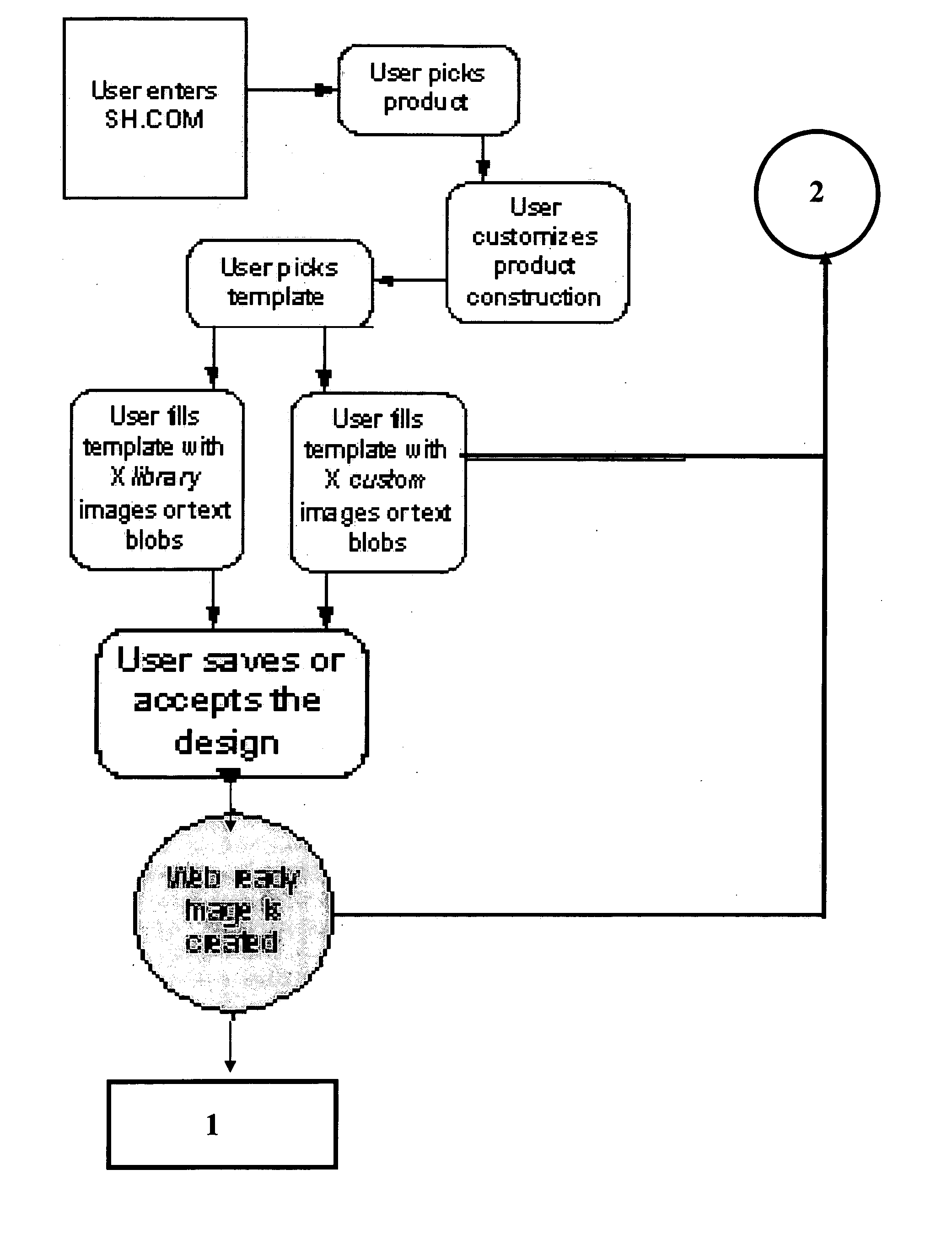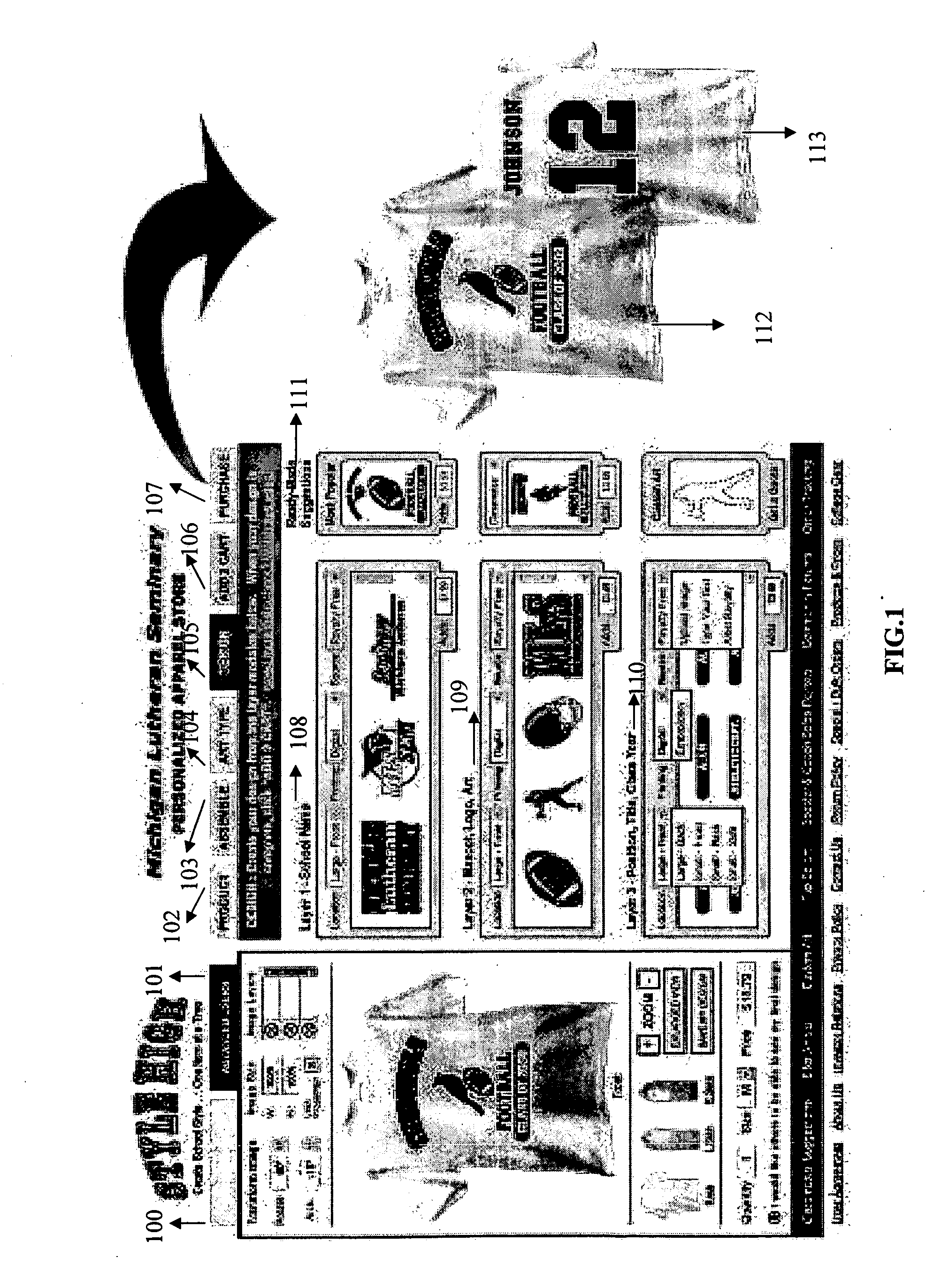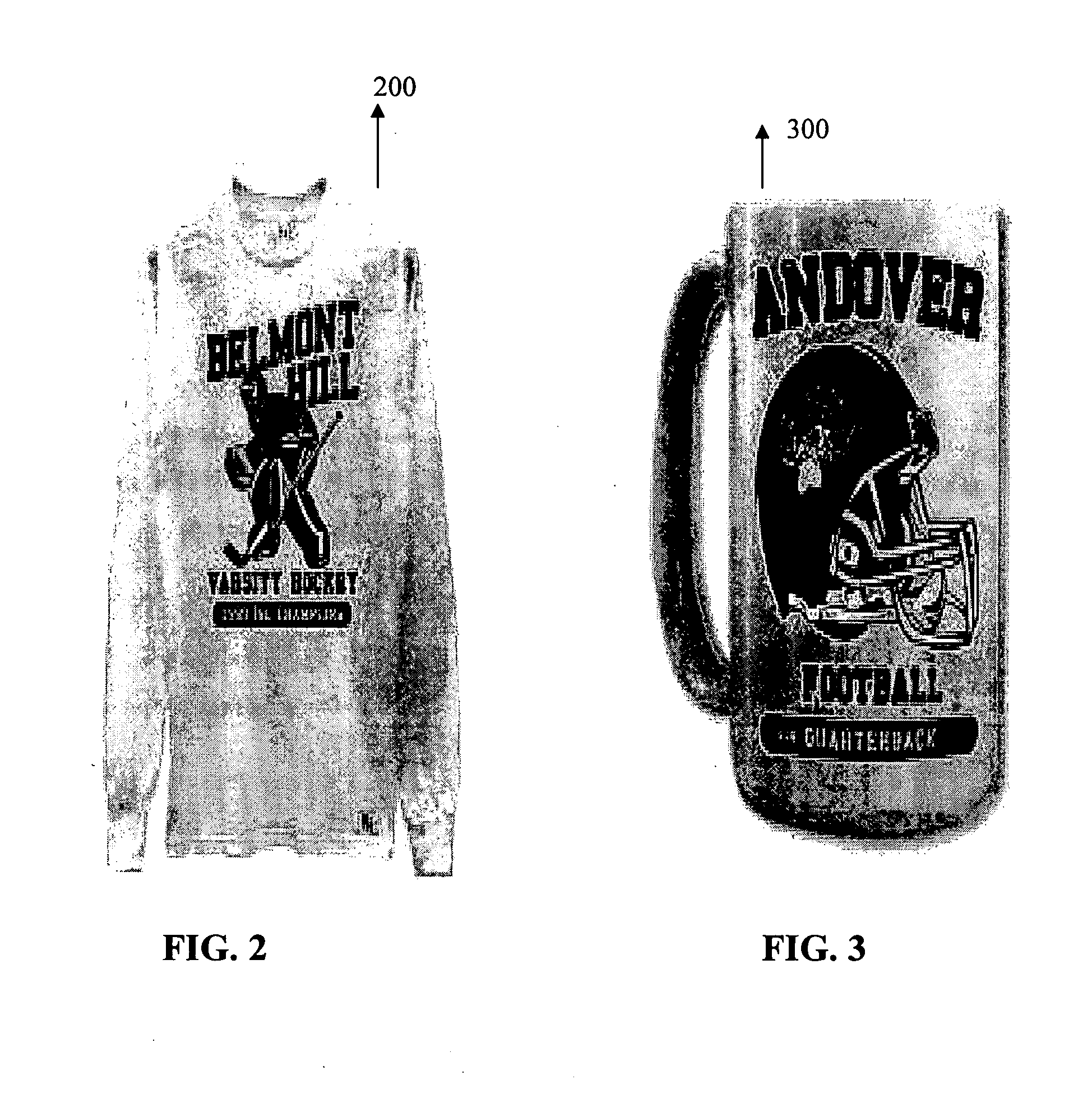Online personalized apparel design and sales technology with associated manufacturing and fulfillment techniques and processes
- Summary
- Abstract
- Description
- Claims
- Application Information
AI Technical Summary
Benefits of technology
Problems solved by technology
Method used
Image
Examples
fifth embodiment
[0093] In a fifth embodiment, each printing area on a product is restricted to equal or less than approximately 4 inches by approximately 5 inches of space. Within this area, images and / or text are enlarged proportionally to their original dimensions in order to occupy as much of the available printing area as possible and be located in an aesthetically pleasing location. As subsequent images and / or text are added, the previous images and / or text are proportionally down sized and moved to accommodate the subsequent images and / or text within the restricted area. The resizing and repositioning is done so that each image and / or text layer does not overlap or interfere with the previous ones. This automatic adjustment of size and location is not currently available on the Internet, the present invention presents the processes to offer such improvements.
sixth embodiment
[0094] In a sixth embodiment, each printing area on a product is restricted to equal or less than approximately 5 inches by approximately 3.75 inches of space. Within this area, images and / or text are enlarged proportionally to their original dimensions in order to occupy as much of the available printing area as possible and be located in an aesthetically pleasing location. As subsequent images and / or text are added, the previous images and / or text are proportionally down sized and moved to accommodate the subsequent images and / or text within the restricted area. The resizing and repositioning is done so that each image and / or text layer does not overlap or interfere with the previous ones. This automatic adjustment of size and location is not currently available on the Internet, the present invention presents the processes to offer such improvements.
seventh embodiment
[0095] In a seventh embodiment, each printing area on a product is restricted to equal or less than approximately 11 inches by approximately 17 inches of space. Within this area, images and / or text are enlarged proportionally to their original dimensions in order to occupy as much of the available printing area as possible and be located in an aesthetically pleasing location. As subsequent images and / or text are added, the previous images and / or text are proportionally down-sized and moved to accommodate the subsequent images and / or text within the restricted area. The resizing and repositioning is done so that each image and / or text layer does not overlap or interfere with the previous ones. This automatic adjustment of size and location is not currently available on the Internet, the present invention presents the processes to offer such improvements.
[0096] The following steps are included as part of the inventive process of creating an aesthetically pleasing design and maximizing...
PUM
 Login to View More
Login to View More Abstract
Description
Claims
Application Information
 Login to View More
Login to View More - R&D
- Intellectual Property
- Life Sciences
- Materials
- Tech Scout
- Unparalleled Data Quality
- Higher Quality Content
- 60% Fewer Hallucinations
Browse by: Latest US Patents, China's latest patents, Technical Efficacy Thesaurus, Application Domain, Technology Topic, Popular Technical Reports.
© 2025 PatSnap. All rights reserved.Legal|Privacy policy|Modern Slavery Act Transparency Statement|Sitemap|About US| Contact US: help@patsnap.com



